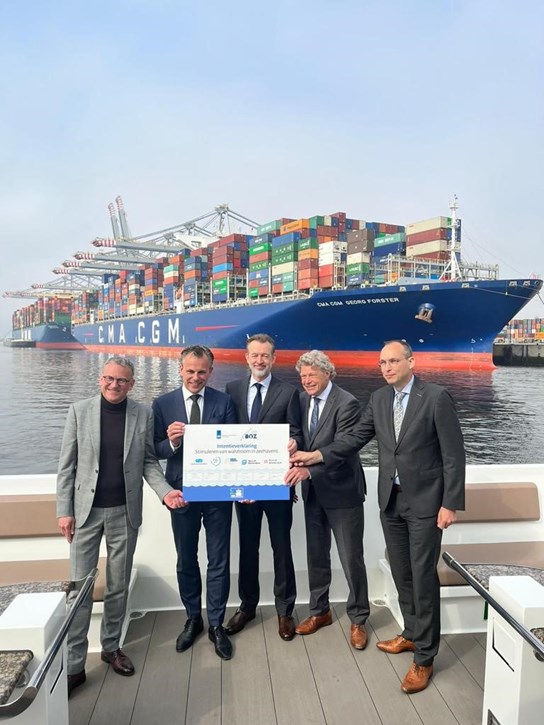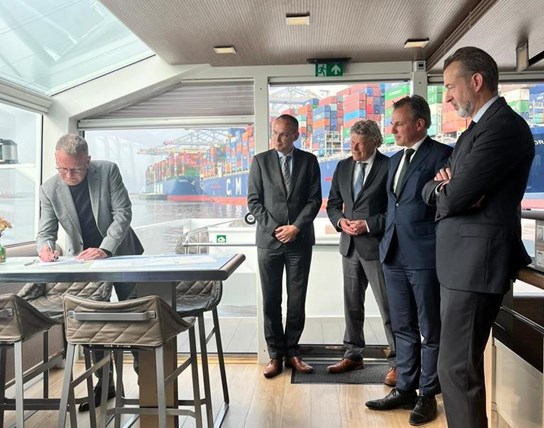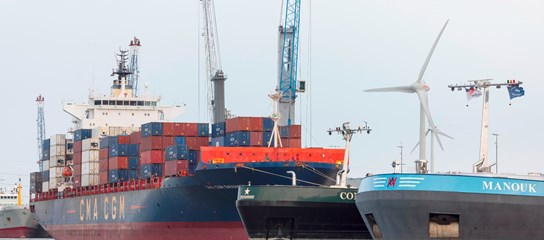Dutch Ministry of Infrastructure and sector work to expand shore power in seaports
Minister Mark Harbers of Infrastructure and Water Management signed a letter of intent with the Seaports Branch Organization (BOZ) on Monday, May 22, setting out public-private agreements on the rollout of shore power in the Netherlands. When berthed vessels shift to shore power, polluting diesel generators on the vessels do not have to run and there is less noise pollution.
The five major Dutch seaports are working with the ministry of Infrastructure and Water Management and the terminals to realize shore power in the respective ports. They include the ports of Rotterdam, Amsterdam, Groningen, Moerdijk and North Sea Port.
Shore power in all European ports
With the upcoming "Alternative Fuels Infrastructure Regulation (AFIR)," European ports are required to provide so-called AFIR vessels with shore power as from 2030. These vessels include container ships, cruise ships, passenger ships, and combined passenger and cargo ships from 5,000 GT (gross tonnage indicating the size of a vessel). They are all large vessels that consume a lot of energy when berthed on the quay.
"To meet the climate goals, it is essential that all sectors do their part, including the maritime sector," Minister Mark Harbers said in the ministry of Infrastructure and Water Management press release. "At the same time, it requires huge investments. I am glad that this subsidy scheme will give the industry a helping hand and encourage the installation of shore power. It will result in environmental gains and fewer noisy generators running while vessels are berthed. It will hopefully free up space for development at the ports, and new climate projects."
The funds for shore power are intended primarily for terminals for AFIR ships, but other marine shore power projects will become eligible for funding, too.
Installing shore power now
"Seaports Branch Organization (BOZ) commends the government's commitment to shore power," said BOZ President Boudewijn Siemons. "Shore power offers many benefits to society, including the reduction of emissions of CO2, NOx, particulate matter and noise. However, this does not translate into a sound business case for terminals and shipping companies. The ministry of Infrastructure and Water Management together with Seaports Branch Organization (BOZ) have established attractive preconditions for the proposed shore power subsidy scheme, in anticipation of the mandatory European introduction of shore power by 2030."
"North Sea Port prioritizes sustainability within port development. The realization of shore power infrastructure is crucial," adds CEO Daan Schalck. “This agreement of intent and the ministry's grant scheme will accelerate the solution for local emissions and improve the footprint of freight transport. It reinforces the ports' “License to Operate”. We will need cooperation between private parties, including grid operators and governments."
The Seaports Branch Organization previously calculated that ports require some 270 megawatts of shore power capacity for AFIR vessels in the coming years to meet the upcoming obligation. The required investment is more than EUR 300 million. The branch association assumes over 220 kilotons of CO2 reduction per year (equivalent to about 75,000 households off gas), and 2.5 kilotons of NOX reduction. When shore power is also provided to vessels not under the obligation, the potential and environmental benefits become much greater. Establishing shore power facilities will not only achieve environmental gains and reduce noise pollution: it may also create nitrogen space for climate projects in the port.




